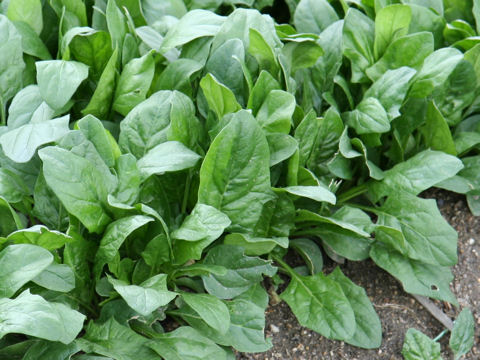Nowadays, land use or reserved for agriculture purposes are almost gone due to the building construction, road, and so on. Because of that people tend to buy vegetables from the market. Don't you know, most of the vegetable sold at the market quite hazardous. If you looked at the physical appearances, it definately looked fine. Didn't you ever try to smell the vegetable? You might be able to smell the pesticide used on the vegetable. If the vegetable smell fresh, you're free to buy it. Some people thought the physical-perfect vegetable is good. Don't be tricked! Better buy vegetable that got holes on it. At least you know the vegetable is pesticide-free or low pesticide used on it. What are the effect if you consume the hazardous vegetable? You may not see the effect soon or later. But after around 10 years, it will starts affecting you. Maybe you'll get heart failure, kidney problem, and other failure of internal organ. To avoid all these things, lets grow our own vegetable. You still can do it even you live in apartment or something like that. No need large space to plant. I show you the simplest method to grow vegetable.

This are the seeds of Poh Choy (
Brassica chinensis)

Then sow the seed in a seed tray if u got one. If not you can sow it in small pot. That weren't the Poh Choy seeds. I didn't take pictures the day i sown them. Sorry~ But the concept is same.

Wrap the seed tray with transparent plastic to keep the moisture. So you don't have to irrigate the seeds until its germinate.

Carefully pull the seedlings off from the seed tray then transplant the seedlings into small pots. I used the small pot so that the nutrient given, absorbed by one plant therefore it will grow vigourously. I supplied the plant with organic fertilizer (chicken dung). Don't put the fertilizer on the medium surface but dipped into the medium. Remember, plant root is geotropisme +ve. They cannot grow upward unless to search water or moist and don't put too much fertilizer.

After two weeks later. Don't forget to apply the chicken dung once every two weeks. As the plant grow you must increase the fertilizer amount a bit.

The vegetables ready to be harvested after 4 weeks. Fresh, Pesticide-free, and vigorous!
 Aphis spp.
Aphis spp. Flower attacked by aphid would stunted and die.
Flower attacked by aphid would stunted and die. Aphis spp.
Aphis spp.
 Spinach (
Spinach (
 Chilli mosaic virus
Chilli mosaic virus Curled leaves of chilli
Curled leaves of chilli Smaller host
Smaller host Solution tank
Solution tank Rock melon
Rock melon Yellow sticky bar
Yellow sticky bar


 Yard long bean
Yard long bean (Corn gall)
(Corn gall)  (Normal corn male flower)
(Normal corn male flower) (Normal corn female flower)
(Normal corn female flower) Gall midge
Gall midge Symptom caused by gall midge
Symptom caused by gall midge





























